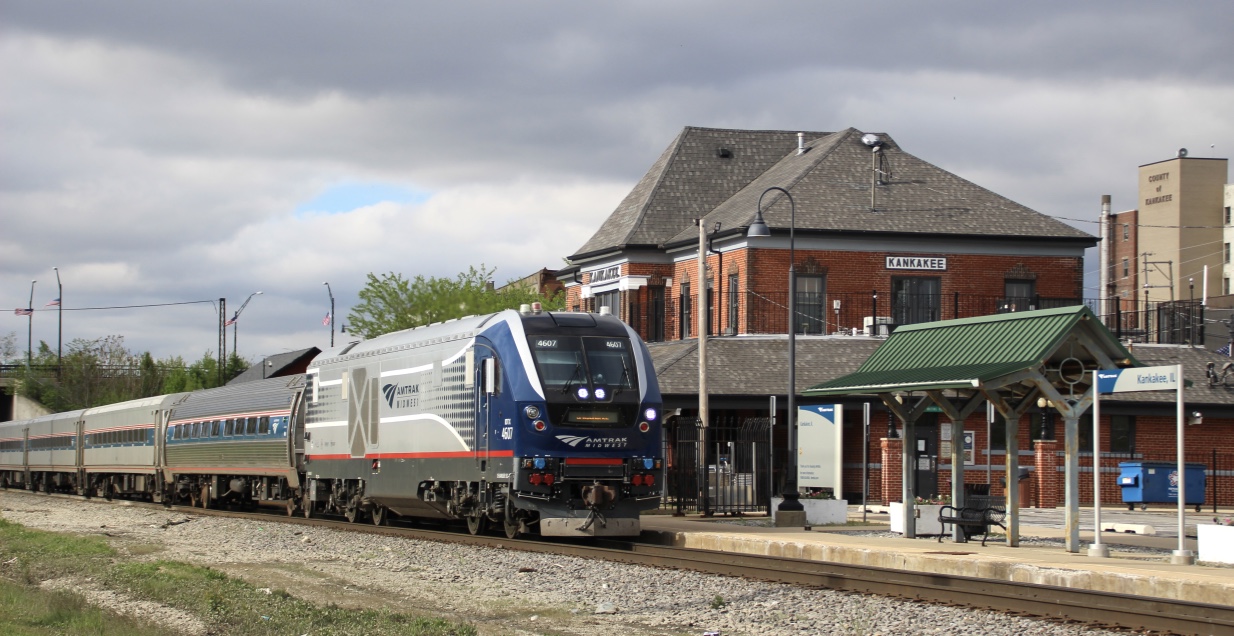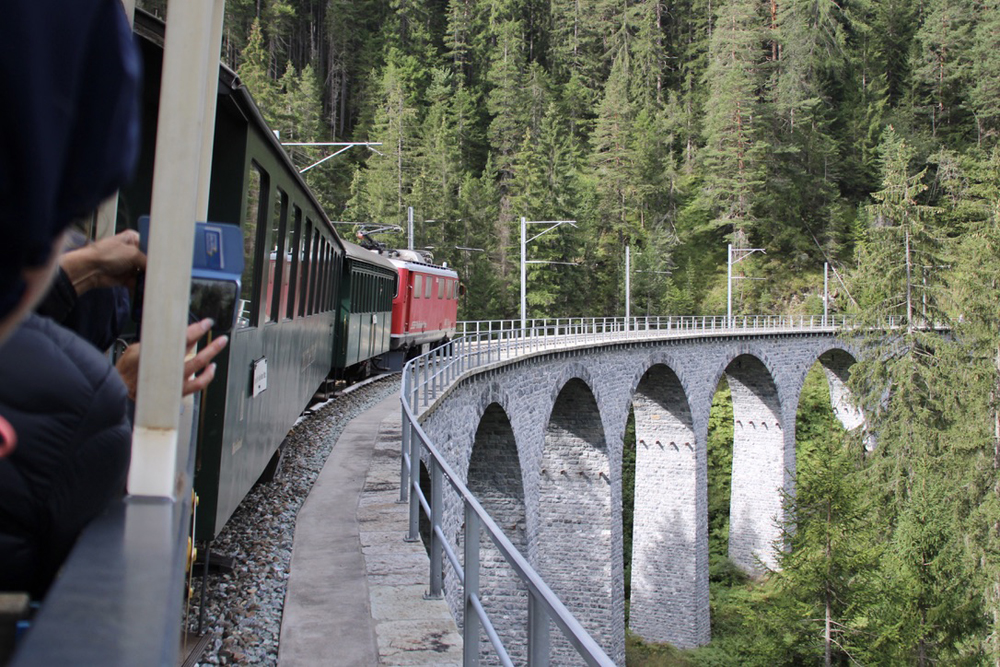
STB prepares for passenger rail oversight, will consider office, advisory group for passenger issues
The Surface Transportation Board has created a staff working group to prepare the board for its oversight of passenger rail issues, board chairman Martin J. Oberman has announced. Under a recently enacted Federal Railroad Adminstration rule, the STB oversees standards for on-time performance and adjudicates issues resulting from that rule, including the setting of schedules [see “FRA publishes final rule setting Amtrak performance standards …,” Trains News Wire, Nov. 16, 2020, and “Analysis: FRA seeks Amtrak, host railroading scheduling cooperation,” News Wire, Nov. 20, 2021]. The working group will evaluate resources needed to address passenger issues and explore the possibility of creating an STB office focused on passenger rail issues and creation of a passenger rail advisory committee. “The formation of an internal agency passenger rail working group will ensure the Board is ready for these duties and will give us a firm foundation upon which to proceed,” Oberman said in a press release. “In the long run, we look forward to working closely with Amtrak and the freight railroads in the nation’s effort to improve its intercity passenger rail system.”
Railcar firm pleads guilty to safety violation in case resulting from worker death
A New Jersey railcar cleaning and repair firm has pled guilty to a safety violation that led to the death of an employee in 2019. The Pocona Record reports Dane Rail Care of Avenel, N.J., could face a $500,000 penalty and five years’ probation as a result of the plea. A 29-year-old man died as a result of working to clean oil sludge from the interior of tank cars without proper ventilation or equipment. Court documents indicate the company did not properly ventilate the cars or check oxygen levels, and failed to equip workers with respirators approved by the Occupational Safety and Health Administration.
Siska First Nation to receive funds for losses resulting from creation of Canadian Pacific
The Siska First Nation will receive a $4.7 million award from the Canadian government for losses stemming from the creation of the Canadian Pacific Railroad. Business in Vancouver reports the award was granted by Canada’s Specific Claims Tribunal, created in 2008 to address claims made by First Nations groups, and is potentially precedent-setting because it is the first time losses have been awarded for lost fishing opportunities. The award covers infringement resulting from CP’s route along the Fraser River in British Columbia, which uses about 90 acres of a reserve set aside for the Siska.













Edward Moyers was the IC president that launched the single-tracking in the early 1980s. EHH was one of Moyers’ top officers although I’ve forgotten his actual title, VP-Operations perhaps. No doubt EHH had a great deal of influence and was perhaps the one who talked Moyers into it. The territory Steunkel Road-Gilman was not only the busiest in the system but was double track/ctc. Why Moyers and Hunter Harrison wouldn’t start with the least-trafficked CHI-NOL double track down south and see how it shook out before going after the north end and a segment with ctc is hard to fathom. Maybe their attitude was, “If we can do it there, we can do it anywhere”. And they did it right on the eve of NS trackage rights Trains 317/318 beginning to operate between Calumet Yard and Gibson City, adding two more trains to the Stuenkel Road-Gilman soon to be single track. I was working days at Kensington Tower at the time and handled #318 when it was running late. Then it almost always showed up during the AM peak.
JACOB- Let me rephrase my post (above). Instead of writing “…what needs to be done…” I should have phrased it “….what passenger advocates are up against…”
MIKE – Passenger or freight I never understood what’s gained by taking up a second main. In EHH’s defense, it’s not actually single track, it’s alternate single-double. Ten miles of single, ten miles of double, something like that.
The factor that is left out of most of these discussions on passenger train viability, even in supposedly rail-fan friendly fora, is that all modes of passenger transport are subsidized. So, let’s not ignore the fact rail isn’t the only mode in need of taxpayer support. By far, the highways consume the greatest amount of subsidy. Is it any wonder why the rail proportion of travel miles has declined since taxpayer support of the highway has grown?
Stand trackside at Kankakee in that picture (as I have) and see that train limp in (as I have) then you will see what need to be done. Put a flower on the grave of EHH who first came to prominence, several CEO slots ago, by lifting the double track at on that line. As can be seen in the photo.
I grew up in Champaign-Urbana (another 70 miles south down the line) and I could never understand why they took up the double track. It’s going to eventually have to be relaid, that’s fairly clear.
Wait a minute. IC passenger trains were losing money long before EHH or Amtrak was created. Why should the freight railroads have to further subsidize passenger rail by maintaining track that they do not need to operate and in some cases pay extra real estate taxes on the unnecessary track, especially when most of society is not willing to “adequately” subsidize Amtrak and commuter rail? And this from someone who is more willing to subsidize passenger rail than I think Charles is
This isn’t about the freight railroads subsidizing anything.
The freight railroads agreed to put the costs of operating the passenger trains on the federal government in exchange for priority right of access to track. While Amtrak has the “right” of access, Amtrak still pays for the actual access–sometimes quite a bit (though Amtrak and the railroads consider these payments confidential, so it is hard to know how much is paid).
Go forward some decades, and the railroads are complaining about the incremental costs of Amtrak despite the choices the railroads made, like pulling up second track of busy mainlines. Or abandoning routes as redundant–when that redundancy might be beneficial today.*
The railroads are playing both sides of the issue. ELS
*I realize there are a lot of nuances. For instance, property taxes are one consideration when it comes to keeping or pulling a second track. ELS
Thanks for pointing that out. Ok then, 25 years for STB. Am I missing another oversight group since 1971?
Only took 40 years to create a passenger rail oversight group at the STB – wow. About time, no? Now let’s see exactly how effective they are.
STB didn’t exist 40 years ago…
How effective? The problems in American passenger rail and the reason passenger rail has had such large losses won’t go away no matter how many new bureaucracies you conjure up.